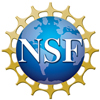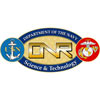Watch the cruise summary video
Read the HOBITSS expedition blog
The Scripps-operated research vessel Roger Revelle has embarked on an important study of a major earthquake zone, sponsored by the U.S. National Science Foundation.
During the HOBITSS Expedition (for Hikurangi Ocean Bottom Investigation of Tremor and Slow Slip), a group of scientists from the United States, Japan, and New Zealand will retrieve instruments from the seafloor off the east coast of New Zealand's North Island as part of a project to measure earthquake activity and movement of the seafloor where the Pacific and Australian tectonic plates meet.
Last May, the international team successfully deployed 35 Ocean Bottom Seismometers (OBS) on the seafloor offshore Gisborne, where they have continuously recorded earthquakes and any upwards or downwards movement of the seafloor for more than a year. The OBS instruments belong to Columbia University and the University of Texas in the US, and to Tokyo University and Tohoku University in Japan.
The recovery of the instruments will involve sending an acoustic signal so each instrument floats back to the sea surface, where it will be recovered by scientists and marine technicians aboard Roger Revelle. The instruments range in size from that of a large suitcase to the size of a washing machine, and weigh between 285 - 440 pounds (130-200 kg) each.
Once the instruments are on board the R/V Roger Revelle, the scientists will download the data that has been recorded over the last year.
The project is designed to give new insights into the earthquake and tsunami potential of the Hikurangi subduction zone, where the Pacific Plate is being thrust under (subducted) beneath the eastern North Island. The plate boundary lies only several kilometres below the seafloor near Poverty Bay.
Offshore Poverty Bay is notable for a phenomenon known as slow-slip events or “silent earthquakes”, which are a focus of this project. Slow-slip events are similar to earthquakes in that they involve more rapid than normal movement across a fault. The main difference is that slow-slip events occur more slowly, over weeks or months, compared to regular earthquakes which occur in a matter of seconds.
If the data recovery is successful, the scientists anticipate important results, because a large slow-slip event occurred beneath Poverty Bay in late September-early October of last year, directly beneath the seafloor network. The slip event was detected by onshore Global Positioning System sites in New Zealand's GeoNet national network of instruments, which is supported by the New Zealand Earthquake Commissin (EQC).
“Highly sensitive pressure recorders on the instruments will be able to detect vertical movements of the seafloor as small as 0.5 cm during the September-October 2014 slow-slip event, and will reveal the extent of offshore slow-slip for the first time ever,” said project leader Dr. Laura Wallace of the University of Texas.
“As well as vertical movements, we anticipate that the instruments will have recorded many hundreds of small earthquakes that cannot be accurately located with land-based instruments,” Dr Wallace said.
Project member and seismologist at New Zealand's GNS Science, Dr Stephen Bannister said: “We also expect the seismological data collected to shed light on the location and origin of the swarm of earthquakes occurring offshore Ruatoria that have been felt in recent months, as well as earthquakes that occurred during the 2014 slow slip event.”
This project constitutes the world’s largest-ever deployment of seafloor instruments specifically targeted at the study of silent earthquakes.
Occurring at one to two year intervals, slow-slip earthquakes involve large areas of Poverty Bay moving eastward by up to 2-3 cm over one or two weeks, as detected by the GeoNet network.
“The only reason we know that slow-slip events occur in New Zealand is because of the large network of GPS instruments that are operated as part of the EQC-funded GeoNet project,” Dr Wallace said.
No-one feels or hears anything during slow-slip events, hence the name “silent earthquakes”, but if the land movement occurred in seconds rather than weeks, like a normal earthquake, it would be equivalent to a magnitude 6.0 to 7.0 jolt.
Poverty Bay is one of about a dozen areas worldwide where slow earthquakes occur regularly. However, this region is unique in that they occur at depths ranging from 5km to 15km under the seafloor.
The unusually shallow depth of the events beneath Poverty Bay makes it a very attractive area for international scientists to investigate this phenomenon.
Yoshihiro Ito and Kimihiro Mochizuki are two of the Japanese scientists involved in the project, and they say that investigating New Zealand’s Hikurangi subduction zone will help them to better understand slow-slip events and earthquakes at their own subduction zones off the coast of Japan.
A collaborator and seismologist on the project, Dr Bill Fry at GNS Science, expects that the new data will also lead to a better appreciation of the earthquake and tsunami potential of this undersea fault system.
Scientists from seven institutions in the US and Japan are involved in the project, including: The University of Texas, Columbia University, the University of California-Santa Cruz, the University of Colorado, Tokyo University, Kyoto University and Tohoku University. Several scientists from New Zealand's GNS Science are also involved in the project, and two of the cruise participants are from Victoria University of Wellington (New Zealand).
Contact:
Dr Laura Wallace, University of Texas
Dr. Bill Fry, GNS Science
Stephen Bannister, GNS Science
John Callan, Communications Manager, GNS Science

Research vessel operations at Scripps Institution of Oceanography are supported by the National Science Foundation (Awards 1119644, 1212770, 1227624, and 1321002).

R/V Roger Revelle is operated by Scripps Institution of Oceanography under a charter agreement with the Office of Naval Research. Roger Revelle is one of six major oceanographic research vessels owned by the U.S. Navy and operated within the University-National Oceanographic Laboratory System as shared-use research facilites.
Related Video: HOBITSS: The Shipboard Experience
- R/V Sally Ride
-
R/V Roger Revelle
-
Handbook
- Section 1: Welcome Aboard
- Section 2: Specifications
- Section 3: Vessel Layout Description
- Section 4: Ship's and Scientific Equipment Description
- Section 5: Technical Services and Special Equipment
- Section 6: Navigation and Communications Capability
- Section 7: Safety
- Section 8: Ship Organization
- Section 9: Scientific Berthing Plan
- Specifications
- Schematic Drawings
- Berthing Plan
- Scientific Equipment
- Major Shipboard Equipment
-
Handbook
- R/V Robert Gordon Sproul
- R/V Bob and Betty Beyster
- Emerit: R/V Melville
- Emerit: R/V New Horizon
- Emirit: Research Platform FLIP
- Preventing harassment and discrimination
- Alcohol and illegal drugs: Zero tolerance
- Departure & arrival times
- Pregnancy and Lactation at Sea
- Accommodating Disabilities
- Minimum Age At Sea
- Isotope Use on Scripps Ships
- Geophysical survey requirements in California waters
- Export controls and compliance
- Scientific shipments to Scripps vessels
- Ship to Shore Communications
- Internet use policy
- Winch and Wire Regulations
- Ship Usage Rates
- Data and Sample Distribution Policy
- Stable Isotopes on SIO Ships
- Carryforward of Ship Time
- Using non-UNOLS vessels
- Transportation Worker's Identification Credential (TWIC)
- Naval Clearances
- Notice to mariners
- Volunteering Aboard Scripps Ships
- USCG Rules for Buoys